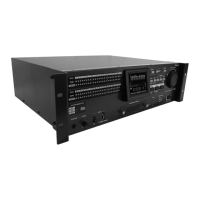63
About Other Features
You can import your own WAV files for playback on the R-1000. This is done by formatting your WAV files properly, then copying
them to an external storage device, then copying from the external storage device to the removable storage drive.
* Only 24-bit .wav files at 44.1 kHz, 48 kHz, or 96 kHz can be imported. Files in other formats or at other sampling rates cannot be imported.
Prepare Data to Import
Prepare data to import first according to the rules below.
• Prepare .wav files of 24 bits/44.1 kHz, 48 kHz, 96 kHz. Files must be mono.
• Do not mix multiple sampling frequencies. Choose one frequency from the above.
• Prepare BWF files if you want to designate the start position of playback.
• The file name must be [TRK$$_##.wav]. ## is the track number (01 - 48) and $$ is the sequential order of playback on track (01-99). If you want to
locate three WAV files on the track 1, those should be named [TRK01_01.wav], [TRK01_02.wav] and [TRK01_03.wav].
• Create a new folder on your external storage device and name it [IMPORT]. Copy all your properly named WAV files to this new folder.
Execute Importing
1. Display the menu screen.
Press the [MENU] button to display the menu screen.
2. Select [IMPORT].
* If [IMPORT] is not displayed on the first page, touch the cursor icons (p. 69) to scroll the pages.
fig.open-storage-menu.eps
3. Start importing.
Touch [Import] on confirmation screen to start importing.
4. Return to the home screen.
Press the [MENU] button to return to the home screen.
The name of the project created from imported data will be created from date/time of the importing process. Date/time parameters are supplied
from the internal calendar/clock of the R-1000.
Importing Audio Data

